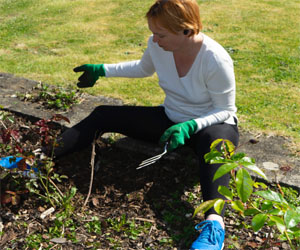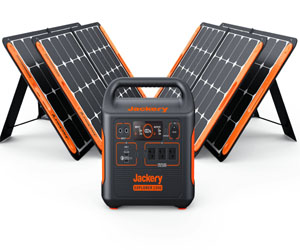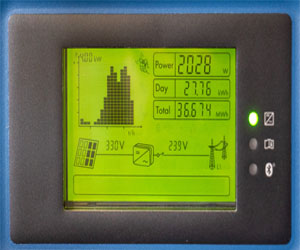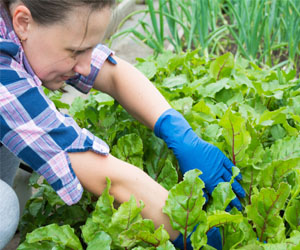


The Heart Of Gardening Success

Nurturing plants is at the core of successful gardening. It's not just about planting seeds or seedlings and walking away; it's a dynamic and ongoing process that involves care, attention, and a touch of horticultural love. In this article, we will delve into the essential aspects of plant nurturing and provide tips to help your green companions flourish.
1. Watering Wisdom: Water is a lifeblood for plants, and getting the right balance is key. Different plants have varying water requirements, so it's essential to understand the specific needs of each species in your garden. Factors like soil type, weather, and the stage of growth also play a role. Overwatering can lead to root rot, while underwatering can cause drought stress. Invest in a good watering schedule and the right tools, such as soaker hoses or drip irrigation, to maintain healthy moisture levels.
2. Soil Care: Healthy soil is the foundation of strong, vibrant plants. Regularly assess the quality of your garden soil and amend it as needed. Composting, mulching, and using organic matter can improve soil fertility and structure. Understanding your soil's pH and nutrient levels will also help you select plants that are well-suited to your garden's conditions.
3. Pruning And Deadheading: Pruning and deadheading are essential maintenance tasks that promote plant health and aesthetic appeal. Pruning involves trimming back overgrown or damaged branches, which encourages new growth and prevents disease. Deadheading is the removal of spent flowers to stimulate further blooms and keep the plant looking tidy.
4. Pest And Disease Management: Keep an eye out for common pests and diseases in your garden. Early detection and appropriate action are essential for preventing infestations. Consider using natural pest control methods to minimize the use of chemicals, which can harm beneficial insects and pollinators.
5. Fertilizing: Plants need nutrients to thrive, and fertilizing can provide a boost when your garden soil is lacking. Select a balanced, slow-release fertilizer and follow the recommended application rates. Over-fertilization can be harmful, so always adhere to the instructions on the product.
6. Mulching: Mulching is a beneficial practice that conserves moisture, suppresses weeds, and regulates soil temperature. Apply a layer of organic mulch around your plants to help maintain soil moisture and prevent temperature extremes.
7. Support And Staking: Tall or heavy plants often require support to prevent them from bending or breaking. Use stakes, cages, or trellises to prop up plants that might otherwise become too top-heavy.
8. Sunlight And Shelter: Different plants have varying light requirements, so it's crucial to place them in the right spot in your garden. Some prefer full sun, while others thrive in shade. Consider the natural habitat of your plants to determine their ideal placement.
9. Observation And TLC: Regularly inspect your plants for signs of stress, disease, or nutrient deficiencies. Stay connected with your garden and provide the necessary care, whether that means adjusting watering routines, adding mulch, or addressing other issues promptly.
10. Love And Patience: Gardening is a labor of love, and nurturing plants requires patience. While it can be frustrating when things don't go as planned, it's essential to stay committed and adapt to changing circumstances. Gardening is a process of learning and growing, both for you and your plants.
Nurturing plants is the heart and soul of gardening. By giving your green companions the care and attention they deserve, you'll not only witness their health and beauty flourish but also enjoy the satisfaction of a garden well-tended and thriving. Remember, the more love and care you invest in your plants, the more they will reward you with their beauty and vitality.
The Future Of Comfort And Efficiency
 Automation And Control
Automation And Control
A central component of smart living spaces is automation and control. Homeowners can remotely manage and monitor their living spaces using smartphones, tablets, or voice-activated virtual assistants like Amazon's Alexa or Google Assistant. This level of control allows for real-time adjustments and customization, enhancing the overall living experience.
Energy Efficiency
Smart living spaces are designed with a strong focus on energy efficiency. They incorporate advanced heating and cooling systems that can be programmed to operate only when needed, reducing energy waste. Smart thermostats learn user preferences and create schedules that optimize comfort while minimizing energy consumption. Lighting systems can adjust brightness based on natural light levels, further reducing energy usage.
Security And Safety
Security is a paramount concern in smart living spaces. These spaces feature advanced security systems equipped with surveillance cameras, motion sensors, and smart locks. Homeowners can monitor their properties in real-time, receive alerts about unusual activity, and control access remotely. This level of security enhances peace of mind.
Entertainment And Convenience
Entertainment and convenience are also central to smart living spaces. Smart televisions, sound systems, and streaming devices can be controlled with voice commands or through a centralized app, creating an immersive and user-friendly experience. Smart appliances, such as refrigerators, ovens, and washing machines, offer convenience features that make daily tasks more efficient and enjoyable.
Illuminating The Future Of Energy
 At the heart of solar technology is the photovoltaic (PV) cell, which converts sunlight into electricity. This process is accomplished through a series of interconnected steps:
At the heart of solar technology is the photovoltaic (PV) cell, which converts sunlight into electricity. This process is accomplished through a series of interconnected steps:
Photon Absorption: When sunlight hits the PV cell, it excites electrons in the semiconductor material. These semiconductors are typically made of silicon.
Electron Movement: The excited electrons move through the semiconductor material, creating an electric current. This movement of electrons is what we harness as electricity.
Inverter Conversion: The electric current generated by the PV cells is direct current (DC). However, most of our electrical devices and appliances operate on alternating current (AC). An inverter converts the DC to AC, making it compatible with standard household electricity.
Energy Storage (Optional): Excess energy generated during the day can be stored in batteries for later use, especially during the night or on cloudy days.
Innovations In Solar Technology
Thin-Film Solar Panels: Traditional solar panels are made of silicon and are relatively thick. Thin-film solar panels use significantly less material and are lightweight, making them suitable for various applications, including flexible solar panels for curved surfaces or portable solar chargers.
Building A Sustainable Future
 The core principle of eco-friendly homes is to minimize the negative impact on the environment while maximizing the use of renewable and sustainable resources. Here are some key elements of eco-friendly homes:
The core principle of eco-friendly homes is to minimize the negative impact on the environment while maximizing the use of renewable and sustainable resources. Here are some key elements of eco-friendly homes:
Energy Efficiency: Eco-friendly homes are designed to be highly energy-efficient. They often feature better insulation, energy-efficient windows and doors, and advanced heating and cooling systems. These features reduce energy consumption and lower utility bills.
Renewable Energy: Many eco-friendly homes incorporate renewable energy sources such as solar panels and wind turbines. These technologies harness clean, sustainable energy from the sun and wind, reducing dependence on fossil fuels.
Water Conservation: Sustainable homes often feature water-saving appliances and fixtures. Rainwater harvesting and greywater recycling systems are also utilized to reduce water consumption, which is especially important in regions facing water scarcity.
Use Of Sustainable Materials: The construction of eco-friendly homes emphasizes the use of sustainable and recyclable building materials. This includes materials like bamboo, reclaimed wood, recycled glass, and low-VOC (volatile organic compound) paints to improve indoor air quality.
Passive Design: Passive design principles make use of natural elements like sunlight, wind, and shade to control the temperature and lighting within a home. This reduces the need for artificial heating, cooling, and lighting.






The Fruits Of Gardener's Labor
 Connection To Nature
Connection To Nature
Gardening is a harmonious dance with nature. Abundant harvests illustrate the beautiful partnership between the gardener and the Earth. Tending to the soil, choosing the right seeds or saplings, watering, and protecting your plants from pests and disease — all these efforts are rewarded by the Earth's generous bounty. The cycles of life in your garden, from planting to harvesting, mirror the larger cycles of nature, and they remind us of our place in the natural world.
Self-Sufficiency And Sustainability
Abundant harvests also represent a move toward self-sufficiency and sustainability. Growing your own food not only reduces your reliance on commercial agriculture but also ensures that you have a fresh and healthy food source right at your doorstep. It empowers individuals and families to take control of their food supply and make environmentally conscious choices. When you produce your food, you reduce the carbon footprint associated with transportation and packaging.
Health And Nutrition
The fruits of abundant harvests are some of the healthiest foods you can consume. Homegrown produce is free from harmful chemicals and pesticides, offering unparalleled freshness and nutrition. These vegetables and fruits are picked at their peak ripeness, preserving their vitamins, minerals, and flavors. When you have an abundant harvest, you have an abundance of wholesome, nutrient-rich foods at your disposal.
Streamline Your Space And Simplify Your Life

1. Start Small
One of the most common mistakes when tackling clutter is trying to do too much at once. Start with a small area, like a drawer, a shelf, or a single closet. Completing one small area can give you a sense of accomplishment and motivate you to continue.
2. The One-Year Rule
If you haven't used or needed an item within the last year, consider whether it's truly necessary in your life. Apply the one-year rule when decluttering. If you haven't touched it in that time, it may be time to let it go.
3. Declutter By Category
Organize your decluttering efforts by category, not by room. For example, gather all your books, clothing, or kitchen items in one place and go through them systematically. This approach allows you to see the full extent of your possessions in that category.
4. Use The Four-Box Method
When decluttering a space, use the four-box method: one box for items to keep, one for items to donate, one for items to sell, and one for items to discard. This method helps you make decisions quickly and efficiently.
5. Minimalism In Mind
Embrace a minimalist mindset by focusing on quality over quantity. Ask yourself if you truly need multiple versions of the same item or if one well-made item will suffice. Reducing duplicates is a quick way to declutter.